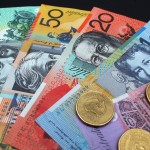Gold fell to a three week low on Tuesday as more upbeat U.S. data reinforced speculation that the Federal reserve may begin tapering its bond purchasing program in the near future.
On the Comex division of the New York Mercantile Exchange, gold futures for December delivery traded at $1 285.40 per troy ounce at 14:51 GMT, down 1.31% on the day. Prices held in range between days high at $1 306.25 and low of $1 278.80 per ounce, the lowest since July 18. The precious metal slipped 0.6% on Monday, extending its weekly decline to 2% so far after plunging 1.66% during the previous five-day period.
Gold was trading lower on the day throughout the European and U.S. sessions as yesterdays strong U.S. services sector data and Fed comments, which implied Quantitative Easing tapering, pressured the metal. Today, another bit of unexpectedly upbeat data pushed gold further down, sending it below the $1 280 mark.
The Commerce Department reported at 12:30 GMT that the U.S. trade deficit narrowed in June to $34.220 billion, exceeding analysts forecast for a drop to $43.5 billion from Mays downward revised reading of $44.1 billion. Statistics showed that U.S. exports rose by 2.2% to $191.2 billion, while imports decreased by 2.5% to $225.4 billion.
This comes after the ISM reported on Monday that the U.S. services sector rose with a lot faster pace in July than in June, hitting a five-month high. The ISM Non-Manufacturing Composite index surged to 56.0, well above analysts’ expectations for a jump to 53.1 from June’s 52.2 figure. Sixteen out of eighteen sectors that are tracked for the preparation of the index have marked an expansion in July, compared to fourteen in June. This boosted the U.S. economy’s recovery prospects, spurring speculation Quantitative Easing may after all be tapered in September, as many analysts project.
The precious metal was also pressured as Federal Reserve Bank of Dallas President Richard Fisher, one of Quantitative Easing’s critics, announced that the central bank is getting closer to tapering the monetary easing program.
Gold has fallen more than 24% this year on speculation the Federal Reserve will trim its bond purchasing program in the second half of the year and bring it to an end by mid-2014. The metal is used mainly as a hedge against inflation, which accelerates when a central bank eases money supply. An exit from a program such as Quantitative Easing would deliver a heavy blow to gold’s price as its demand will crumble. According to a Bloomberg survey of analysts last month, fifty percent of the 54 economists expect Fed to taper its Quantitative Easing program in September.
Market players are looking ahead at this week’s U.S. data to further gauge the recovery pace of the world’s top economy. On Wednesday, U.S. Consumer Credit indicator will likely show a decline to $15 billion in June, down from May’s $19.615 billion. Thursday’s Initial Jobless Claims are expected to have risen by 9 000 to 335 000 in the week ending August 3.





